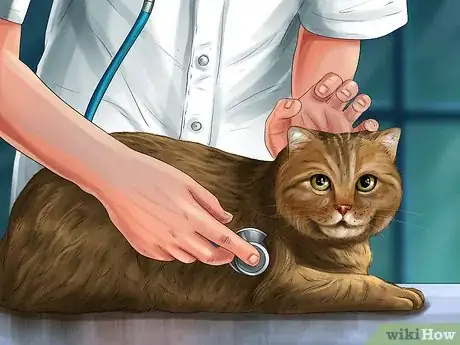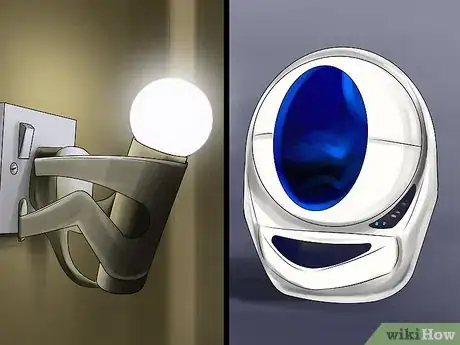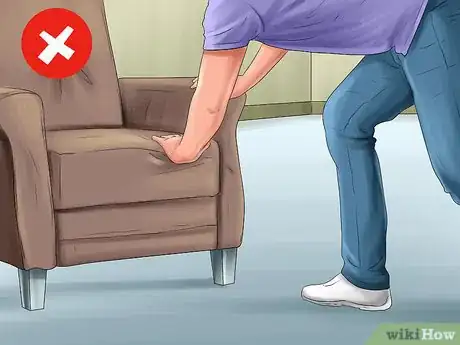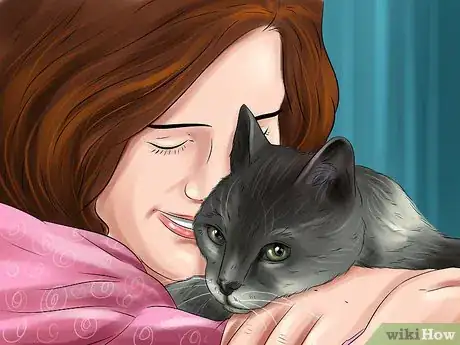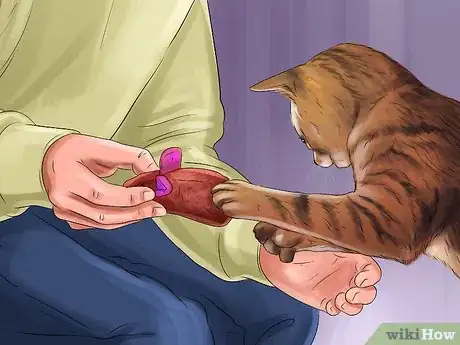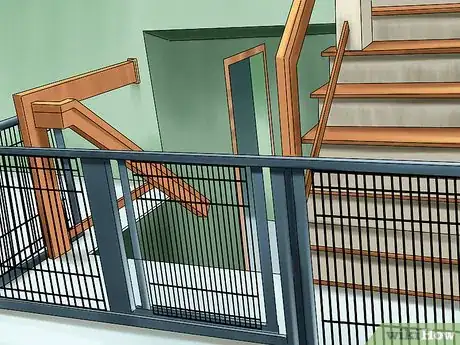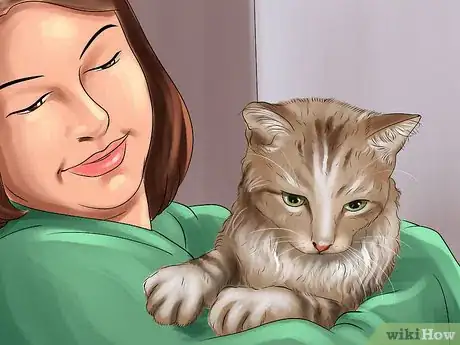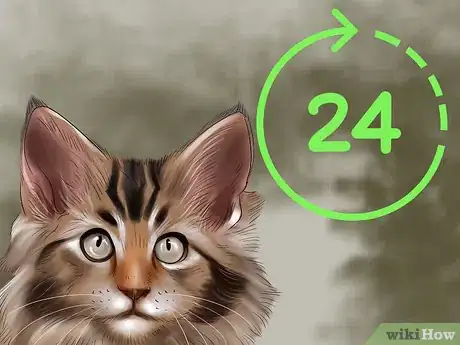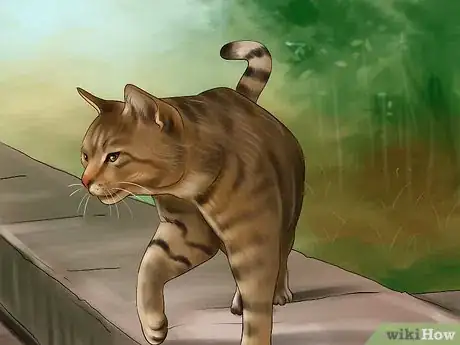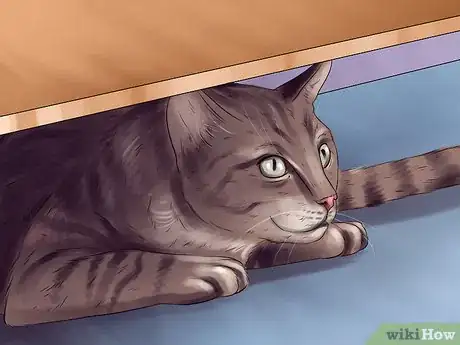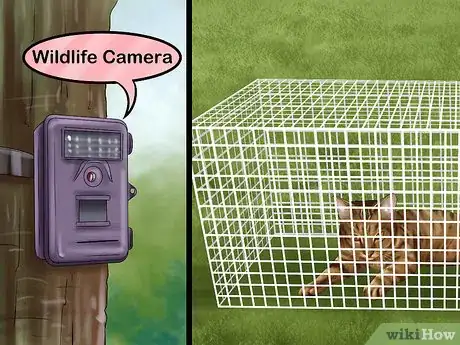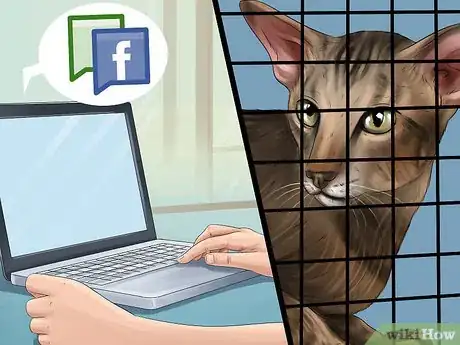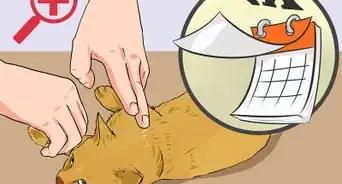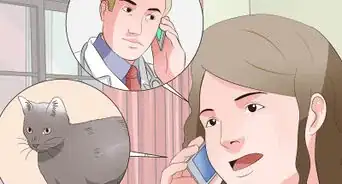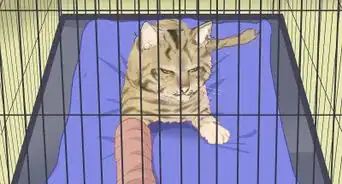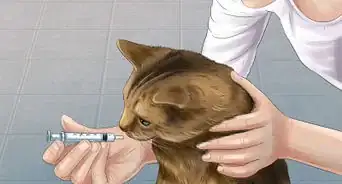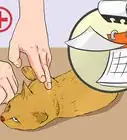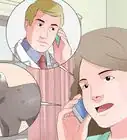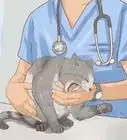This article was co-authored by Lauren Baker, DVM, PhD. Dr. Lauren Baker is a Veterinarian and Assistant Scientist at the University of Wisconsin-Madison. With over 10 years in veterinary medicine, she specializes in the concept of “one health,” which uses insights from veterinary medicine to help human medical research. She holds a Ph.D. in Comparative Biomedical Sciences, a Doctor of Veterinary Medicine, an MS in Comparative Biomedical Sciences, and a Bachelor’s degree in Psychology from the University of Wisconsin-Madison.
There are 10 references cited in this article, which can be found at the bottom of the page.
This article has been viewed 14,206 times.
Cats may become disoriented if they run away outside of their territory, or due to cognitive problems as they age. To help a cat who is disoriented outside, look around the last place it was seen. To help a cat who is disoriented due to age or a medical condition, take them to the vet, keep their routine similar, and take measures to help them know where they are.
Steps
Recognizing Mental or Medical Disorientation
-
1Notice if your cat gets lost. Aging cats or cats with medical problems may get confused and disoriented in familiar places. They may look around like they’re not sure where they are, or not know where they are going, even though the place is very familiar to them.[1]
-
2Watch for aimless walking. Another symptom of disorientation in cats is walking without a purpose. Your cat may wander around the house or yard without any direction. You may find them pacing around rooms.Advertisement
-
3Monitor for blank staring. Cats who are disoriented may stare off into space without really looking at anything. This is different than actively watching out the window. The cat may also just stare at an object without moving.
-
4Watch for any difficulty getting through the house. Cats who are disoriented may end up being unable to navigate their way past things in their way. They may stand in front of a chair or wall and not be able to figure out how to move past or over it.[2]
-
5Notice any other signs of disorientation. Your cat may also become disoriented in other ways. They may not be able to do normal tasks, like find their food bowl and eat or use the litter box. They may eliminate in the wrong area.[3]
- Some disoriented cats may start meowing more than usual or at unusual times.
-
6Determine if your cat's medication causes disorientation. Some medications may cause disorientation in your cat. Some antibiotics used to treat ear infections may lead to disorientation.[4] Some anti-vomiting medications may cause dizziness and disorientation.[5] Some anxiety medications can also lead to confusion in cats.[6]
- If your cat takes any medication, read the side effects to check if disorientation is a side effect. If your cat is experiencing side effects, contact your vet immediately to see if another medication is available, or if they have suggestions for symptom management.
Addressing Mental or Medical Disorientation
-
1Take your cat to the vet. Disorientation can be a sign of a potential medical problem. If your cat appears more disoriented than usual, they should be evaluated by a vet as soon as possible. The vet will give your cat a physical examination to check for any conditions, such as blindness brought on by high blood pressure, that may affect their cognitive function.[7]
- You will probably have to provide a detailed history, including information on how long this behavior has been going on. The vet may ask for specific examples of how your cat acts disoriented.
-
2Let your cat know where you are. If your cat gets disoriented and doesn’t know where you are, they may start meowing loudly. They may pace around a room or become confused. To help your cat, you can come into the room to let them know you are still there.[8]
- You can also just talk to them from another room so they can hear you and know that you are near.
-
3Leave on lights at night. Some cats may become disoriented in the dark. They may not know where they are, or become disoriented because everything is so quiet. To help your cat figure out where they are in the dark, quiet house, leave lights on or get some nightlights.[9]
- Make sure to put nightlights near the litter box so your cat can easily find it. You may also want to put lights near the cat’s food and any cat furniture.
-
4Keep furniture in place. Rearranging furniture can cause disorientation for cats that cannot see well and use touch and memory to navigate their environment. Keep furniture as consistent as possible. If it must be rearranged, do so while your cat is in another room. Then, introduce them to the rearranged room and help them navigate as they learn the new layout.
-
5Keep the cat near you. If your cat gets really disoriented during the day, or especially at night, keep them near you. You can take the cat with you as move from room to room during the day. At night, take the cat into the bedroom and provide a comfortable place to sleep.[10]
- If you put the cat in your room at night, make sure there is a litter box in there, too.
-
6Play with your cat. Keeping your cat active can help their brains and may lessen some of the disorientation. Buy your cat new toys or try to engage them with their favorite toys. Play with them around the house by encouraging them to chase, climb, or move.[11]
- Don’t change what you do too much. Extreme changes to your cat’s everyday life can cause them to become even more disoriented.
-
7Talk to the vet about changing the cat’s diet. You may be able to help your cat’s cognitive function by giving them different food. Foods that contain antioxidants, omega-3s, and certain vitamins may help improve your cat’s memory and brain function.[12]
- Don’t change your cat’s diet without discussing it with your vet first. Get recommendations about new foods from them.
-
8Limit their access to the house. Keeping your cat in a smaller area of the house can help if they are disoriented. Giving the cat a few rooms to roam around can help keep the areas familiar and keep them from getting confused.[13]
- Block off stairs so the cat can’t go upstairs or into basements.
- If you have a very large house, consider blocking hallways or doorways into other parts of the house.
-
9Try to keep the cat on a sleep schedule. Some disoriented cats may get nights and days confused, especially when they are older. This can lead to disorientation for the cat because they are sleeping all day and staying awake at night. Help the cat by keeping them awake during the day.[14]
- If you see the cat sleeping, gently wake them up. Interact with them throughout the day, carry them from room to room with you, and talk to them so they will stay awake during the day.
-
10Keep a constant routine. Cats who get easily disoriented benefit from routine. This includes feeding and sleeping schedules, along with play times. Try to do these activities around the same time each day.[15]
- Make sure to keep the litter box in the same place, even if you place multiple ones around the house. Keep the main litter box in the same place so your cat always knows where it is.
Helping a Lost and Disoriented Cat
-
1Determine if your cat has escaped outside. Some cats become disoriented when they escape from their territory. This may be an indoor-only cat who has gotten outside, or an outdoor cat who has escaped from their owner when not in their territory. Being out of their territory can make them scared and disoriented.
-
2Look for your cat near to the house. Cats who get out from their home generally are very close to their territory instead of far away. They generally find somewhere to hide as soon as they exit their territory. This means they may be very close to your home, but don’t realize it because they are disoriented.
- Start looking for your cat by making your search radius near to your home.
-
3Check in places the cat can hide. Out of their territory, cats will hide in places where predators cannot find them. The disorientation will lead your cat to find somewhere safe to hide. Start by looking for the cat under decks, porches, houses, and cars.
- You also may want to look in thick wooded areas or areas with plants that will conceal the cat.
- Check any hole, corner, or crevice your cat can fit. The cat probably won’t meow to protect itself, so you will have to look for them.
-
4Use wildlife cameras and humane traps. A good way to help your disoriented cat return home is to recapture them with a humane trap. Humane traps are tripped when the cat enters it, and a door closes that contains the cat so you can bring it home. You can place bait in the trap to entice the cat into the trap.[16]
- Wildlife cameras can be purchased online, at outdoor retailers, or some pet stores.
- Humane traps can be found online, through local shelters, or at pet stores.
-
5Wait for a few days. Some disoriented cats may come out of hiding after a few hours, but others may stay well hidden for days. If your cat is a skittish cat, it will take them longer to come out. This means that even if you set up a humane trap or wildlife cameras, you may not get any activity for a few days.[17]
-
6Try to find the owner if you find a disoriented cat that isn't yours. You may come across a scared, disoriented cat in your yard. If this occurs, try asking around the neighborhood about any lost cats. Most cats stay close to their home when they have become disoriented.
- If no one in your neighborhood or a nearby neighborhood has lost a cat, contact the local Humane Society and animal shelters. Owners with missing pets often contact shelters to see if someone has reported any found pets.
- Look for missing pet signs. Many people put up signs about their missing pets. Check around your area for any fliers or posters.
- Post on social media. Most towns and communities have Facebook discussion pages, so check if your area has one where you can post the information about the found cat.
References
- ↑ https://www.aspca.org/pet-care/cat-care/common-cat-behavior-issues/older-cats-behavior-problems
- ↑ http://www.petful.com/pet-health/cat-health-warning-signs/
- ↑ http://www.petful.com/pet-health/cat-health-warning-signs/
- ↑ http://www.petmd.com/cat/conditions/neurological/c_ct_head_tilting
- ↑ https://www.vetinfo.com/causes-of-dizziness-cats.html
- ↑ http://www.petmd.com/cat/conditions/neurological/c_ct_serotonin_syndrome
- ↑ http://pets.webmd.com/cats/guide/aging-cat-behavior#2
- ↑ http://www.catbehaviorassociates.com/caring-for-senior-cats/
- ↑ http://www.catbehaviorassociates.com/caring-for-senior-cats/
- ↑ http://www.catbehaviorassociates.com/caring-for-senior-cats/
- ↑ https://www.petcarerx.com/article/5-signs-of-aging-cat-dementia/1457
- ↑ https://www.petcarerx.com/article/5-signs-of-aging-cat-dementia/1457
- ↑ https://www.aspca.org/pet-care/cat-care/common-cat-behavior-issues/older-cats-behavior-problems
- ↑ http://www.vetstreet.com/dr-marty-becker/is-your-kitty-confused-4-signs-of-cognitive-dysfunction-syndrome
- ↑ https://www.aspca.org/pet-care/cat-care/common-cat-behavior-issues/older-cats-behavior-problems
- ↑ http://www.maddiesfund.org/what-you-dont-know-about-lost-pets-can-hurt-them.htm
- ↑ http://www.maddiesfund.org/what-you-dont-know-about-lost-pets-can-hurt-them.htm
About This Article
If you notice your cat walking aimlessly, staring blankly, or struggling to navigate through the house, it may be disoriented and need to be taken to the vet. Your vet will most likely do a physical exam and ask you questions about your cat's day-to-day behavior to make sure the disorientation isn't a symptom of a more serious medical problem. While disorientation usually occurs with age, it can also be caused by medication, so also check your cat's medicine for side effects like dizziness, disorientation, or confusion. If you have an older cat that's experiencing mental disorientation, you can help it out by letting it know where you are, leaving lights on, and keeping it on a sleep schedule and regular daily routine. For more tips from our Veterinary co-author, including how to help a lost and disoriented cat, read on!






